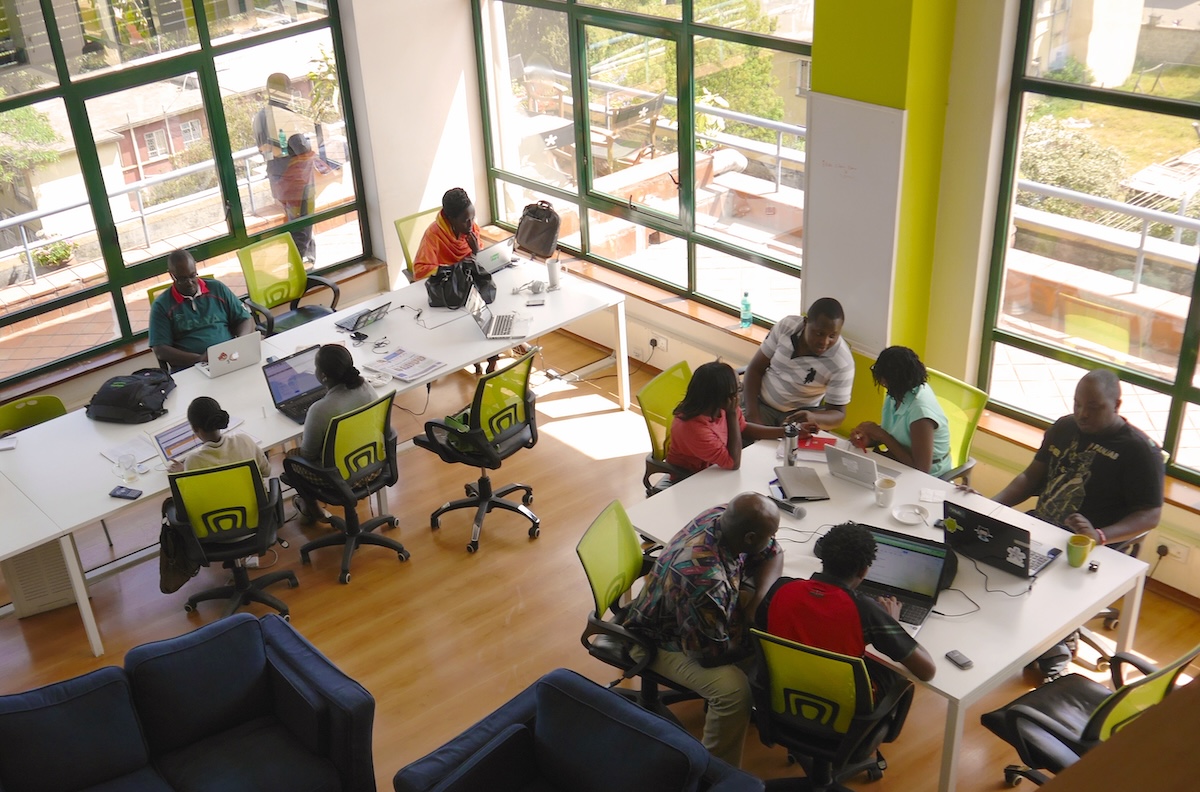A would-be Assassin’s Creed game set in the Reconstruction era and focused on a former slave was reportedly called off in 2024 after Ubisoft deemed it “too political in a country too unstable,” per a source quoted in a new piece from Kotaku…
Blog
-

As Nobel Prize goes to Venezuela’s opposition leader, how far would Trump go to help her?
This Nobel Prize win for Maria Corina Machado is being hugely welcomed by the opposition in Venezuela.
The hope is it will draw renewed international attention to their cause.
Responding to the prize, Machado directly called for help from the man…
Continue Reading
-

Nacelle Opens Up Star Trek Wave Two Action Figure Line Pre-Sale
“This is one of the biggest weeks we’ve had since launching the line,” said Nacelle CEO Brian Volk-Weiss. “Between the pre-sale, long-awaited updates, and new reveals — we wanted to give collectors everything they’ve been waiting for, and…
Continue Reading
-

Exclusive: Bill Gates, PAHO consider ways to bring weight-loss drugs to lower-income countries
Item 1 of 3 Bill Gates speaks at the annual Bloomberg Philanthropies Global Forum in Manhattan, New York City, U.S., September 24, 2025.REUTERS/Caitlin Ochs
[1/3]Bill Gates speaks at the annual Bloomberg Philanthropies Global Forum in Manhattan, New York City, U.S., September 24, 2025.REUTERS/Caitlin Ochs Purchase Licensing RightsLONDON, Oct 10 (Reuters) – The Gates Foundation and the Pan American Health Organization are both working on ways to make weight-loss drugs like Novo Nordisk’s Wegovy and Eli Lilly’s Mounjaro more accessible in lower-income countries, the global health groups told Reuters.
In separate interviews, Microsoft founder Bill Gates and PAHO director Dr Jarbas Barbosa said for the first time that their organizations were each seeking strategies to remedy the unequal availability of the highly effective but expensive treatments.
Sign up here.
About 70% of the roughly one billion people with obesity live in low and middle-income countries which may struggle to meet the costs of tackling the epidemic and associated health problems like diabetes and heart disease.In response to a question about the treatments, Gates said his Foundation would take any drug that was effective in high-income countries “and figure out how to make it super, super cheap so that it can get to everyone in the world”.
For example, it is currently working with Indian drug manufacturer Hetero to help bring cheaper copies of a new HIV prevention drug to the market in lower-income countries for $40 a year.LOW-COST COPIES
From next year, the active ingredient in Novo Nordisk’s blockbuster Wegovy drug, semaglutide, comes off patent in countries including China and India. Generic manufacturers are already working on low-cost copies.The brand-name weight-loss drugs are primarily sold in wealthier countries, where prescriptions cost hundreds of dollars per month.
The Gates Foundation could also potentially support clinical trials to test how these medicines affect different populations and provide the data needed to broaden access, Gates said.
Any entry into obesity would represent a new arena for the Gates Foundation, which remains focused on fighting the deadliest diseases in low-income countries, like malaria.Obesity’s role in chronic illness has created a new urgency around addressing rising global rates, although it is still not the biggest problem facing most of the countries where the Foundation operates, Gates said.
The World Health Organization estimates that the economic costs of overweight and obesity will reach $3 trillion by 2030 if nothing is done to contain it.
WHO recommended in draft guidelines this year using weight-loss drugs as an obesity treatment for adults, but criticized their manufacturers over cost and lack of availability.Its Americas arm, PAHO, manages a fund that helps push down medicine prices by guaranteeing bulk orders on behalf of its 35 member states.
Using the fund, which is financed by the member states, is an option for weight-loss drugs, Barbosa told Reuters. He said it could also help manufacturers clear regulatory requirements rather than applying in each country for approval.
“We are starting the conversation,” he said, adding that PAHO is developing recommendations for how best to use the drugs and plans to speak to Novo, Lilly and generic drugmakers within the next couple of weeks.
Eli Lilly (LLY.N) declined to comment. Novo Nordisk (NOVOb.CO) said in a statement that it recognised the “unmet need” for its treatments.“We are deeply committed to serving patients around the world,” the Danish company said.
Editing by Michele Gershberg and Catherine Evans
Our Standards: The Thomson Reuters Trust Principles.
Continue Reading
-

Cadbury Reimagines Iconic Teams, Bands and Figures as Heroes Chocolates
Cadbury has unveiled ‘ ‘All Heroes, No Zeros’, a major new integrated campaign and brand platform for the much-loved Cadbury Heroes, created by global creative agency of record VCCP.
‘All Heroes, No Zeros’ positions Heroes as the…
Continue Reading
-
Food formulation and precision nutrition in the Ozempic era – AgFunderNews
- Food formulation and precision nutrition in the Ozempic era AgFunderNews
- Surgery, Pills, and Plants: How GLP-1s Are Shaping the Obesity Debate American Council on Science and Health
- IIFH Discovery Forum: At the intersection of nutrition and…
Continue Reading
-

Philips Evnia 25M2N3200U Announced with 24.5″ 1080p IPS Panel and 310Hz Overclocked Refresh Rate
Philips have unveiled a further gaming monitor in their Evnia 3000 series. The 25M2N3200U is a 24.5″ ‘Fast IPS’ panel with a 1920 x 1080 resolution and a native 310Hz refresh rate which can be overclocked to 310Hz.
Philips…
Continue Reading
-

Digital technologies could be key to boosting gains for African micro-entrepreneurs
Across sub-Saharan Africa, a quiet revolution is underway. Equipped with smartphones and empowered by broadband connectivity, millions of micro-entrepreneurs are transforming how goods and services are produced and sold in local economies. This isn’t only a tech trend, but a paradigm shift in the economic fabric of the region, which boasts the highest rate of entrepreneurship in the world, with over 22% of working-age Africans launching new ventures. These agile businesses, rooted in socioeconomic adaptation and innovation, are increasingly powered by digital tools that enable mobile payments, online marketplaces, and real-time customer engagement. Mobile internet penetration in Africa has tripled over the past decade, now reaching over 527 million subscribers. With smartphone adoption projected to hit 88% by 2030 and more users accessing the web via mobile devices, digital platforms are rapidly becoming the backbone of economic inclusion. But what factors drive this digital adoption by micro-entrepreneurs? And how does it shape productivity, growth, and policy design? Understanding these forces is not just an academic exercise. It is essential for crafting public economic policies and private sector-led growth-enhancing measures that unlock inclusive, robust, and sustainable development across Africa.
Key example: Digital adoption in agrifood systems
Digital technology is reshaping micro-entrepreneurship across Africa’s agrifood systems, particularly in informal markets where traditional infrastructure remains limited. As mobile broadband expands and smartphone access deepens, digital platforms are emerging as critical tools for trade while themselves being accelerated by growing African trade. This mutually reinforcing cycle leads to job creation and financial inclusion, thereby bridging the formal-informal divide and boosting productivity and output growth. This transformation is particularly apparent in agricultural value chains, where small-scale intermediaries, often women, play a vital role in linking producers to consumers.
A recent study we conducted in Benin highlights these dynamics. In a country where grains and legumes account for 90% of food consumption, food intermediation remains predominantly a women-led subsistence activity. Using data from Bohicon and Ouando, two semi-rural markets in the country, our research shows that 80% of food traders are women, 60% manage teams of six or more workers, and 90% have over a decade of trading experience. This underscores the maturity and economic significance of these informal micro-enterprises. Although most of these micro-entrepreneurs (52%) have no formal education, the sector is rapidly adapting to digitalization, with mobile broadband penetration rising from under 2% to 42% in just ten years.
Nearly half (49%) of surveyed micro-entrepreneurs have adopted digital technologies to trade their products, reshaping how these informal businesses operate. These adopters tend to be more educated than their peers, conduct larger and more frequent transactions, and are embedded in digitally active networks, suggesting that proximity to other users reinforces adoption through network effects. Yet the promise of digital technology adoption comes with notable constraints: 54% of surveyed adopters face connection costs at or above 20% of the national minimum monthly wage, while 45% blame poor internet quality as a major barrier to efficient business operations. These frictions highlight the need for tailored infrastructure and affordability solutions to ensure that digital transformation reaches its full potential among Africa’s micro-entrepreneurs. Our analysis suggests that digital adoption translates into greater productivity: Adopters outperform their peers based on a range of productivity measures. They also report a 50% increase in both trading frequency and volume, indicating that digital tools are not just modern conveniences, but powerful catalysts for scaling informal enterprises and unlocking latent economic potential.
This sectoral case, among others, illustrates how digital adoption among micro-entrepreneurs is not only accelerating but also redefining the contours of economic participation, especially for women in informal agrifood systems. It also underscores the catalytic role of digitalization in improving food security.
Inclusive digital adoption goes beyond expanding infrastructure
The adoption of digital technologies among micro-entrepreneurs is not random. It reflects deeper patterns of socioeconomic access and network exposure. Our study reveals that younger, wealthier, and more educated individuals are significantly more likely to integrate digital tools into their business practices. Proximity to other digital users also reinforces adoption, suggesting that peer influence and community-level networks play a crucial role in shaping tech-savviness and digital behavior.
These findings carry important implications for digital inclusion strategies across Africa. First, they underscore the need to address structural inequalities in education and income that stifle digital opportunities. Without well-calibrated and targeted interventions, digital transformation could exacerbate existing divides between more advantaged entrepreneurs and those left behind in low-resource settings.
Second, the power of network effects points to the value of localized digital ecosystems. Policies that support digital hubs, peer learning, and community-based training can amplify adoption by leveraging social proximity and trust. Beyond focusing exclusively on individual capacity-building, policymakers could consider how to productively activate collective digital readiness, especially in a continent historically known for a high degree of communality.
Finally, our finding that the variables of gender, experience, or formal business affiliations do not have a significant effect on level of digital adoption suggests that traditional segmentation may miss key levers of digital transformation in the African context. Digital adoption appears to be less about identity or tenure, and more about access, exposure, and perceived utility. This calls for flexible, tailored, and context-sensitive approaches that prioritize connectivity, affordability, and relevance over rigid gender or social network targeting.
In sum, fostering inclusive digital adoption requires more than expanding digital infrastructure. It calls for a nuanced understanding of who adopts, why, and under what conditions they do. Digital adoption in Benin’s agrifood systems offers valuable insights for designing more effective and equitable digital policies across the continent.
Policy pathways to accelerate digital adoption among micro-entrepreneurs
Unlocking the full potential of digital technologies for micro-entrepreneurs in Africa requires a multi-pronged policy approach that addresses both infrastructure and financial constraints. Evidence from our Benin study underscores the importance of well-thought out and targeted interventions to enhance digital uptake and economic performance among micro-entrepreneurs, especially in informal markets.
First, improving the quality of mobile broadband emerges as a high-impact lever. Our structural model simulations reveal that upgrading internet reliability and speed yields the most significant gains in both adoption rates and productivity. This finding points to the need for sustained and cost-effective investments in digital infrastructure, particularly in semi-rural and underserved areas, where poor connectivity continues to hinder business operations.
Second, while reducing the cost of mobile broadband access has a positive effect, its impact is more modest when broadband connection quality remains low. This suggests that affordability policies must be coupled with service quality improvements to be fully effective. Governments and telecom providers can explore tiered pricing models, public-private partnerships, or intra-platform competition to lower entry barriers without compromising service standards.
Third, easing credit constraints is essential for enabling micro-entrepreneurs to invest in digital tools and scale their operations. Many informal micro-enterprises lack access to formal finance, limiting their ability to purchase smartphones, pay for data plans, or adopt productivity-enhancing digital platforms. Expanding access to microfinance, mobile money, and alternative credit scoring mechanisms, especially those leveraging transactional and utility data, can help bridge this gap.
Together, these findings highlight the need for integrated digital inclusion strategies that combine infrastructure upgrades, affordability measures, and financial empowerment. By aligning these efforts with the lived realities of micro-entrepreneurs, many of whom are women operating in mature but underserved sectors, policymakers can foster a more inclusive and resilient digital economy, and in turn, lift productivity, output, employment, and livelihoods across Africa.
Continue Reading
-
Sleep Disruption in Menopause Demands a Proactive Approach – Medscape
- Sleep Disruption in Menopause Demands a Proactive Approach Medscape
- Navigate night sweats and understand how menopause impacts sleep ABC15 Arizona
- Sleep expert shares 5 simple tricks to finally beat menopause insomnia Tom’s Guide
- Trouble sleeping…
Continue Reading
-

When 12 U.S. States May See Aurora This Weekend
A vivid Aurora Borealis display reflected in the Glendo Reservoir in Glendo State Park, Wyoming. The Northern Lights may be visible on camera — and possibly to the naked eye — across 12 northern U.S. states and Canada overnight on Saturday,…
Continue Reading
